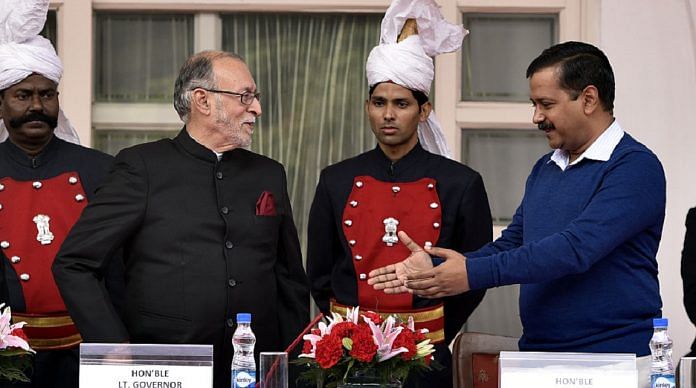The different opinions penned by the judges leave some key issues unaddressed.
The Supreme Court ruling on the power tussle between the Delhi government and the Centre defines the broad contours of the powers of the Lieutenant Governor of Delhi.
The ruling surely limits the role of the L-G than what the union government had assumed, and says that on subjects in the State List, he has to agree with the Delhi government. However, the ruling does leave some issues unaddressed.
FULL TEXT: The Supreme Court judgment in Arvind Kejriwal Vs Centre power struggle
For starters, the opinion written by the Chief Justice of India Dipak Misra on behalf of himself and justices A.K. Sikri and A.M. Khanwilkar does not exactly say what are the matters in which the L-G can differ with the council of ministers and make a reference to the President of India.
Misra’s verdict hints what the L-G must keep in mind while differing – “constitutional trust”, “collaborative federalism” and “pragmatic federalism” – but does not conclusively lay down the law. Justice D.Y. Chandrachud, in para 140 of his concurring opinion, attempts to clear the air, but even that is vague enough to cause confusion – he says when there is a question of “national interest” involved, the L-G can differ with the opinion of the council of ministers.
Now, a fresh bench of the court will examine a host of issues where the L-G is said to have exceeded his powers. These include the appointment of a chief secretary without the aid and advice of the council of ministers, and the issue of the anti-corruption bureau.
What has changed?
More often than not, constitutional courts in India resort to complex interpretations of law to bring clarity. In Wednesday’s ruling, the court has stuck to a straight, textual, literal interpretation of the Constitution.
Since the court has said that the L-G will continue to have the final word on three issues – land, police and public order – as envisaged by the Constitution, many have wondered what really has changed.
The extreme stand taken by the Centre was that an elected government in Delhi is only meant to give the people a “semblance of democratic, participative form of government”. Additional Solicitor General Maninder Singh had argued that the Delhi government is only namesake and the national capital is ruled by the L-G, an extension of the union government.
The Centre’s interpretation of Article 239AA of the Constitution and the role of the L-G was approved by the Delhi high court.
Once you read past CJI Misra’s dizzying 120-word first sentence, he says the Centre’s stand that the L-G is the power centre in Delhi is illogical and defeats the “spirit of the Constitution”.
Chandrachud and ‘the basic structure’
Justice Chandrachud goes a step further on the Delhi government’s position, equating it to the “basic structure of the Constitution that cannot be amended or removed”.
Chandrachud notes that some amendments, in fact, strengthen the original Constitution instead of taking away from it.
Delhi began to have an elected government after Article 239AA was inserted through the 69th amendment in 1992. Since this amendment strengthens democracy in India, it forms part of the basic structure.
In explaining how he arrived at that conclusion, Chandrachud cites the example of another amendment made to insert ‘secularism’ in the Constitution. He says – almost warning the likes of union minister Ananth Kumar Hegde of the BJP, who talk about deleting the word ‘secular’ from the Constitution – that it is now part of the basic structure and cannot be removed.
He also cheekily quotes from a piece written by senior advocate Raju Ramachandran on how the basic structure doctrine evolved by the court shatters the right-wing dream of making India a Hindu rashtra.
Bhushan’s sympathy
Finally, Justice Ashok Bhushan also pens a concurring 123-page opinion, although he “substantially” agrees with the other opinions. Bhushan seems rather sympathetic to the Centre in examining the allegations levelled by the Delhi government. In one instance, he says that “the union ordinarily does not interfere with or meddle with the day-to-day functions” of the Delhi government.
Ultimately, he agrees that the Delhi government just has to keep the L-G posted on all decisions.
Overall, the rhetoric-heavy ruling pretty much settles the issue on who is the boss in Delhi, but does not ensure that such tussles are avoided in future.






